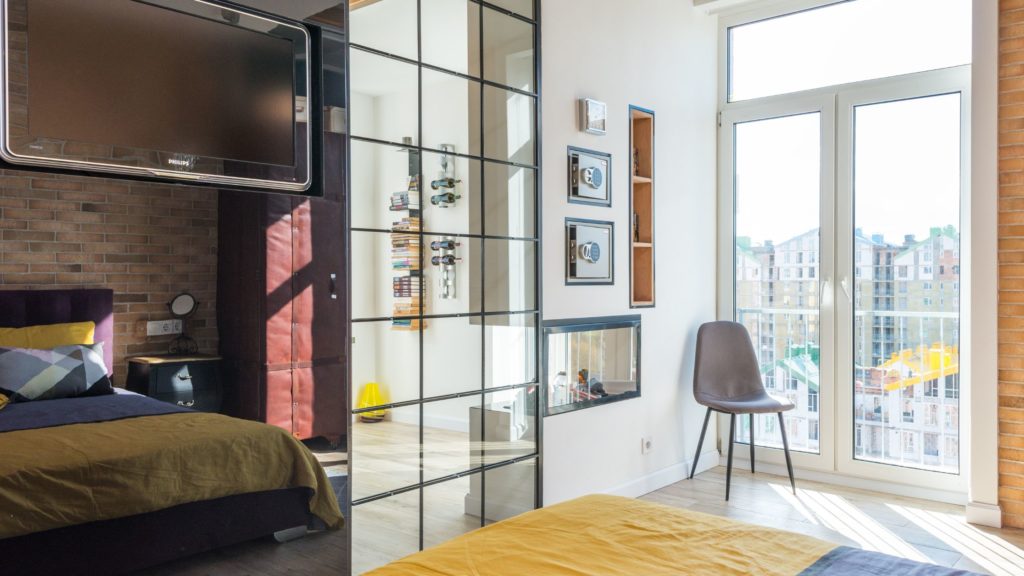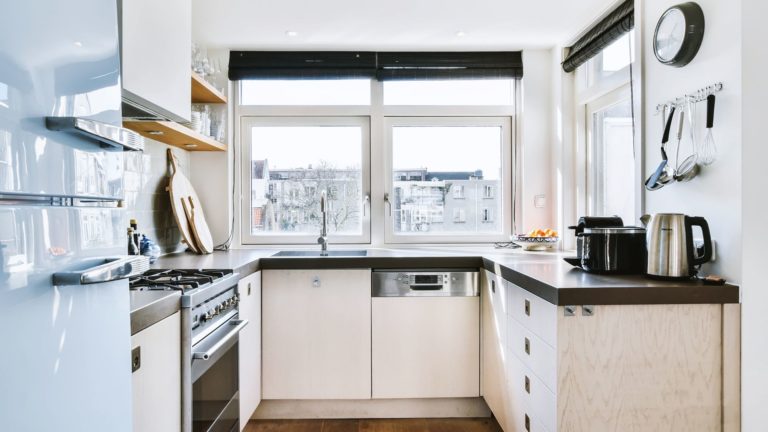In the age of tiny homes and urban apartments, it’s no secret that many of us are living in smaller spaces than ever before. But just because you’re short on space doesn’t mean your home has to lack in style or functionality. With a little creativity and ingenuity, you can transform your petite abode into a functional and aesthetically pleasing space. Here are some decorating tips to help you optimize and make the most out of every square inch of your small house.
Embrace Multi-functional Furniture:
Seek out furniture that serves multiple purposes. Consider a sofa that can turn into a bed for guests, or an ottoman that offers storage inside. A drop-leaf table can act as a desk, dining table, or even a prep station in the kitchen. By incorporating these multi-tasking pieces, you can save space without sacrificing functionality.
Use Light Colors to Open Up the Space:
Lighter shades can make a room feel more open and airy. While dark colors tend to absorb light and make a space feel smaller, light hues reflect it, creating an illusion of a larger space. Go for shades like soft blues, light grays, and creamy whites.
Maximize Vertical Space:
Think up instead of out. Wall-mounted shelves, tall bookcases, and hanging storage can help you utilize vertical space, freeing up the floor and making rooms feel less cluttered. Don’t forget the space above cabinets or doorways either!

Clear the Clutter:
Less is definitely more in a small space. Streamline your belongings and be deliberate about what you keep. Avoiding clutter will not only make your space feel bigger, but it’ll also be easier to maintain.
Use Mirrors Strategically:
Mirrors can instantly double the perceived size of a room by reflecting light and the space itself. Position them opposite windows or in dark corners to maximize their space-enhancing qualities.
Opt for Clear Furniture:
Items like lucite chairs or glass coffee tables are virtually invisible, making the space feel less crowded. They are chic, modern, and most importantly, they allow the eyes to travel freely around the room without interruption.
Incorporate Hidden Storage:
Think of places where you can incorporate storage that isn’t immediately visible. Under-bed storage, built-ins, or even hollowed-out spaces under staircases can be excellent areas to hide away items without taking up valuable real estate.
Floating Furniture:
Wall-mounted desks or vanities can free up floor space, giving the illusion of more room. Similarly, floating shelves can replace bulky bookcases.
Opt for Bigger, but Fewer Decorative Pieces:
It might sound counterintuitive, but in smaller spaces, one larger decorative item can make the room feel less cluttered than several smaller items. Instead of many small paintings, opt for one large statement piece.
Be Mindful of Scale:
Just because the space is small doesn’t mean the furniture has to be. However, you need to be wary of overcrowding. The key is balance. A large sofa might work, but you might then opt for an open chair or a smaller coffee table. It’s all about creating harmony.
Open It Up with Open Shelving:
In the kitchen or bathroom, consider open shelving. It can make a space feel more open than closed-off cabinets. Plus, it forces you to keep things tidy and can be a great way to display beautiful dishes, jars, or other household items.
Let the Light In:
Maximize natural light wherever possible. Keep window treatments light and breezy, and avoid heavy drapes. Not only does it help with the perception of space, but natural light also offers a host of other benefits, like improving mood and reducing energy costs.
Think Thin:
In tight spaces, slender furniture can be your best friend. Think thin table legs, slender armrests, and streamlined designs.
Use Rugs to Define Spaces:
Especially in studio apartments or open floor plans, rugs can help demarcate different zones, like dining, living, or sleeping areas. This creates a sense of organization and division without the need for walls.
Embrace Curves:
Rounded furniture, like circular tables or curved sofas, can be easier to maneuver around in tight spots. Plus, they give the room a dynamic feel.
Incorporate Vertical Greenery:
Bringing nature inside not only enhances the mood but also optimizes space when done vertically. Consider wall-mounted planters, hanging gardens, or even a green wall with low-maintenance plants like succulents. The greenery adds life, color, and texture to a room without taking up valuable floor space.
Play with Heights and Layers:
Layering isn’t just for fashion; it can be applied to interior design too. Incorporate decor and furniture of varying heights to draw the eye upwards and create a sense of depth. For instance, place a tall floor lamp beside a low-slung sofa or hang wall art at different levels to create visual interest. When items in a room are all at one level, it can feel flat and uninviting, but adding layers gives dimension and character to the space.
By integrating these additional elements, you add layers of intricacy to your small space, making it feel more expansive and dynamic. Whether it’s the tranquility brought by indoor plants or the depth achieved by playing with layers, these strategies can further elevate the feel and function of your petite dwelling.
In conclusion
decorating a small house doesn’t mean compromising on style or functionality. By integrating these tips and tricks, you can transform any small space into an optimized, chic, and functional living area. Always remember, it’s not the size but how you use it that counts.


